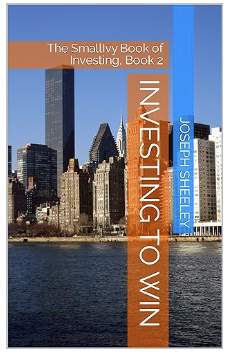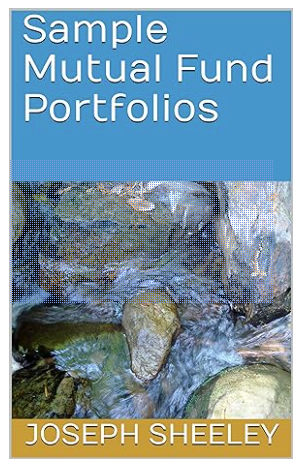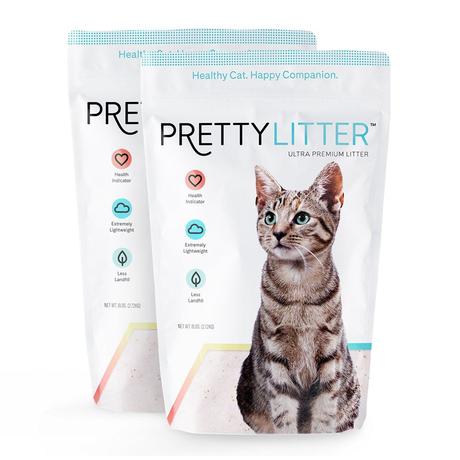
Today we’re going to dive into the world of options and discuss one particular strategy called “covered call writing.” This is a fairly safe way that you can generate income from a stock that you own and is particularly useful during times when interest rates are low and therefore dividend yields are also low. Option writing will return less over long periods of time than just holding the stock and there are certainly some pitfalls. Still, the technique can be useful for certain situations and should be in your quiver of techniques.
(Note, this site contains affiliate links. As an Amazon Associate I earn from qualifying purchases. When you click on an affiliate link and buy something, The Small Investor will get a small commission for the referral. You are charged nothing extra for the purchase. This helps keep The Small Investor going and free. I don’t recommend any products I do not fully support. If you would like to help but don’t see anything you need, feel free to visit Amazon through this link and buy whatever you wish. The Small Investor will get a small commission when you do, again at no cost to you.)
What are options and what specifically are calls?
Options are legal contracts between investors where one of the individuals agrees to buy or sell shares of stocks for a specific price (called the strike price) before a certain date (the expiration date) to the other individual in the agreement. The first individual is the option “writer” and the second is the option “buyer.” They are called “options” because the person who buys them has the option to use them (“exercise” them) or not. The person who writes the contract and agrees to buy or sell the shares receives money from the buyer in exchange for making the agreement. This fee is called a “premium” and the person who wrote the option keeps it regardless of whether the option buyer uses the option to buy the shares or not. If the option buyer does not use the option before the expiration date, the legal contract expires worthless and both parties walk away.
For the buyer, if he buys an option to buy shares, he can make money from the movement of the share price between the time he buys the option and the time the option expires. Because the premium he pays is much less than the value of the shares, he can make a very large percentage gain for the money he pays for the premium if he is right and the stock goes up substantially before the expiration date for the option.
On the flip side, if he buys the right to sell shares, he can buy what is effectively an insurance policy for shares he own since he will be able to sell them at the strike price regardless of what the shares do as long as he acts before the contract expires. He may do this if he wants protection from the share price going lower but doesn’t want to sell the shares outright in case the price goes higher. Some buyers just buy an option to sell without owning the shares if they think the price of the stock will fall because they can make money by owning the option without needing to put as much money at risk as they would by shorting the shares.
To facilitate creation of these legal contracts, exchanges require options be sold in specific increments of 100 shares per contract and that expirations be on specific dates. They also require the prices at which the shares are bought or sold be at $5 increments for higher-priced stocks ($2.50 increments or even $1 increments for lower-priced shares). This allows people who trade options to know at which prices they are likely to find options for sale (or be able to trade options at) so that they can devise strategies involving buying or selling many options at once. These strategies get really complicated quickly, so we won’t cover them in this article.
I’ve been investing for more than 40 years. In that time, I’ve learned a lot about what to do and what not to do. I’ve refined it all down into what I call the “Investing to Win Method.” I’ve put it all in my newest book, Investing to Win. Whether you’re a new investor or someone who is really not getting the kind of returns you desire, you can benefit greatly from reading this book.

Investing to Win
The options that allow the buyer to purchase shares at a specific price are called “call options.” (Those that allow the buyer to sell shares of stock he has at a specific price are called “put options.”) Obviously, the main purpose of put options are to serve as insurance against a sudden loss due to a drop in share price. The main purpose of call options are to be able to make a quick profit off of a stock that goes up rapidly while putting little money into the trade. They can also be used to protect someone who has shares sold short from a sudden and large move up in the price of the stock.
Note that this “protection” is only good as long as the person on the other side of the trade will be able to live up to his side of the bargain. During the financial crisis of 2008, people who sold protection against defaults on mortgage securities were not able to pay the money they owed when those securities collapsed, leading to banks being on the verge of collapse. With options, there are requirements to be able to trade options and brokerage have requirements on those writing options to reduce the chance of a default on the obligation.
As stated above, there are two types of options, called “calls” and “puts.” Call options give the buyer the option to buy the shares at a specified price from the option writer. Put options give him the option to sell shares at a specific price to the option writer. Most stocks have both calls and puts written on them at a variety of strike prices.
Each option contract is normally written for 100 shares. One call option will give the buyer the right to buy 100 shares. A put option will give him the right to sell 100 shares. The price of an option (the premium) is normally in dollars per share, so a call option listed at $2.25 will cost $225 ($2.25 per share x 100 shares = $225). To be cost effective, it is generally best to buy or sell at least 5 or 10 options in a trade, so one would buy ten calls at $2.25, say, for a cost of $2250. The buyer would then profit from the movements of 1000 shares. The option writer would receive that $2250 and then be on the hook for selling 1000 shares to the option buyer if the buyer uses the option to buy the shares before the expiration date.
Do you know how to select mutual/index funds to maximize your returns? If you’d like a little guidance, check out Sample Mutual Fund Portfolios . This gives sample portfolios you can use for reaching all sorts of different goals, including retirement.

What are covered calls?
The term “covered” means that the person writing the call owns the shares he is writing the option against. He is then “covered” for any movement in the price of the stock. (If the person does not own the shares, it is called “naked” option writing, which is far more risky since the writer would need to acquire the shares at whatever the market price was if the option buyer decided to exercise the option.) For example, someone who owns 1000 shares of XYZ stock in January could write 10 covered calls on the shares with a stock price of $50 and an expiration date of February 21st. If the stock was at $45 per share when the calls were written, he might collect something like $2 per share in premiums, or $2000 total.
If the stock stayed below $50 between then and February 21st, the option buyer would probably not exercise the option since he could just buy the shares on the open market for less than $50. The option would then expire worthless and the option writer would be free to write another 10 calls for a later date, March 15th, say. If he were able to do this once per month and the options were never exercised, he would be making $2000 x 12 = $24,000 per year from option premiums. Given that the stock was at $45 and he had 1000 shares, that would be $45,000 in stock. By receiving $24,000 per year, he would be making a $24,000/$45,000 = 53% return on his shares! This is the attraction of option writing.
We actually use Pretty Litter and really like it. The bags are light and delivered right to your door. There is no odor. Clean-up is a breeze, just a few seconds a day. And rather than dealing with clumps from urine, is just gets absorbed into the litter and you just change out the liter every few weeks. It even changes colors if you cat has an issue so you can get them checked out!
Give it a try! Click on the picture below to get started and support The Small Investor when you do.

How do you write covered calls?
As you may have inferred, options can be complicated and there are risks people may not consider. For this reason, not everyone can trade options. You will need to get permission from your brokerage firm to do so and they may still not let you do certain trades if they feel the risk is too great for your situation. Understand that they have regulations they must comply with and also don’t want to be sued by clients who lose money and they claim they did not understand the risks.
If you are interested in trading covered calls, you will need to contact your brokerage and fill out a form. They will ask for information such as how long you have been trading stocks and your financial situation. This can include how much income you make at your job and how much money you have in cash and securities. You will need to specifically request the types of option trades you wish to make and they will need to grant you each of these. They will then decide which types of trades they will allow you to do. Once this agreement is in place, you can then start trading options.
Because writing covered calls is the lowest risk activity involving options, it is the easiest trade to get permission to do. The next lowest risk is called writing “collateralized puts,” meaning writing puts (agreeing to buy shares) while you have enough money in your account (collateral) to buy the shares if you should get assigned to do so. Things like buying calls and puts and writing naked calls and puts are higher risk and will require more experience and resources. The truth is these are great ways to lose money and you should therefore not concern yourself with them.
In fact, the risk involved in buying calls and puts is the reason writing covered calls (and collateralized puts) is so effective. Most option contracts expire worthless, so the chances are fairly good that if you write a call, the option will expire worthless and you’ll get to keep your shares and the premium. Because you are getting some money for the trade, writing covered calls on shares is actually lower risk than just owning the shares since, if the share price decreases, your loss will be reduced by the premiums you collect.
Once you are approved to trade, actually writing a call simply involves entering the information like you would for a stock trade. In addition to choosing which stock, you would need to specify the type of option (call or put), the strike price and he expiration date. Just like with a stock, you could choose to do a market order or set a limit. Options have “bid” and “ask” prices just like stocks and the mechanics work the same way.
Once your order is executed, you then will see the option listed among your holdings as a short position. The price of the option will vary just like that of a stock would. For a call, the price will increase as the stock price increased, particularly when the stock price is near or above the strike price. The price of the call would decrease as time passes and you get closer to the expiration date since that would reduce the chances that the stock price would increase before expiration.
As long as you have the shares, the value of the call option will not matter. If the stock price goes up, the option will become more valuable, but so will the stock. Because the option will vanish if/when it is executed, even though you may have a big short position on the option if the stock goes way above the strike price, that will all be wiped out when the option is executed. Regardless of how high the stock goes, the most you will get when the option is executed for your shares is the strike price, so anything above that will be lost. (This is the main disadvantage of writing covered calls – you limit your potential gains.)
Need a good primer on the basics of stocks and bonds, along with other types of investments? Check out SmallIvy Book of Investing: Book1: Investing to Grow Wealthy

Getting out of a covered call
Let’s say that you wrote 10 January $50 calls on your XYZ stock and want to get out of the deal. You can do this by buying the same option you sold (10 January $50 calls) in the options market. When you do this, whoever you buy the calls from will then have taken on your responsibility and agree to sell their shares to the option buyer. You will no longer be obligated. (In actuality, you’ll never know who either party is. In fact, specific buyers and sellers are not actually linked, but that’s more detail than you need right now.) You can do this up until the point someone exercises their option and you are assigned to sell your shares to them. This can actually happen at any time, but normally does not occur until the option is about the expire.
The price you’ll pay for the XYZ options will depend on:
- what the share price is compared to the strike price and
- how long it is until the options expire.
Obviously, if the stock price is above the strike price, the option will cost at least as much as the difference in prices. If XYZ is at $60 per share, the price will be at least $10, or $10,000 for the 10 option contracts. If you sold them for $2000, you would lose at least $8000 on the deal. You would then get to keep your shares, however, meaning that you would gain $10 per share, or $10,000 in capital gains on the shares. The effect is therefore that you are raising your cost basis for the stock by putting more money into the stock and increasing how much the stock would need to rise for you to make a given profit. If the stock then went back down in price to $50, you would lose that extra $10,000 you put into the stock if you sold the shares.
The share price would also include a time premium. For example, if your XYZ options had 2 months before they expired, the option might cost $13 instead of just $10 when the shares were at $60. You would therefore need to pay $13,000 for the options to close the trade. That extra $3000 would just be gone, so you would have made $2000 when you wrote the options but paid $3000 when you bought them back, for a net loss of $1000.
Obviously, if you keep buying back options after you write them and the stock goes above your strike price, you’ll be losing money and not making premiums. You therefore do not want to write options on your shares unless you will be happy selling the shares at the strike price and letting the shares go. It is often better to just let the shares be sold rather than closing the position at a higher price and putting more money into the stock. Some people will write collateralized puts on the stock if they lose their shares from a covered call they wrote, then buying the shares with the put and repeating he process. This process of continually writing covered calls and then collateralized puts when the shares are bought from the covered call is often called doing “the wheel.”
Follow me on Twitter to get news about new articles and find out what I’m investing in. @SmalllIvy_SI
Disclaimer: This blog is not meant to give financial planning or tax advice. It gives general information on investment strategy, picking stocks, and generally managing money to build wealth. It is not a solicitation to buy or sell stocks or any security. Financial planning advice should be sought from a certified financial planner, which the author is not. Tax advice should be sought from a CPA. All investments involve risk and the reader as urged to consider risks carefully and seek the advice of experts if needed before investing.
